Bright young talent gives way to dark clouds for Doncaster Rovers under Ken Richardson: Revisiting The Catt Chronicles - pt3
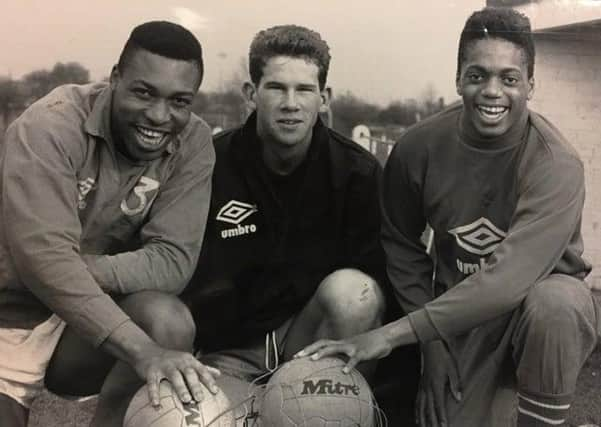

Each piece covered a ten year period in Rovers’ history, with Catt reflecting on the big events and recollecting the managers and top players of the time.
Here, we continue our revisit of the series, as we look at part three which covers 1986/87 to 1995/96.
*********
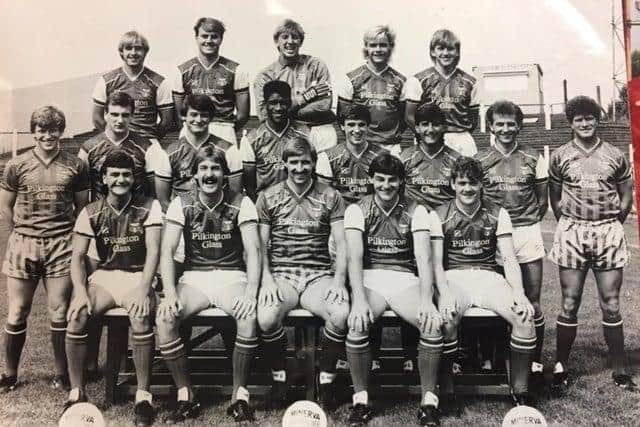

Advertisement
Hide AdAdvertisement
Hide AdThis was a decade of mediocrity illuminated by the extraordinary FA Youth Cup run of 1987/88 and Billy Bremner’s return, which saw him go close to becoming the only manager to win three promotions at the club.
Unlike previous decades there were no memorable cup runs for the first team and Rovers slid back into the Fourth Division, finishing in the bottom five four times.
It also saw the arrival of Ken Richardson which was almost the beginning of the end for the club.
YOUTH CUP
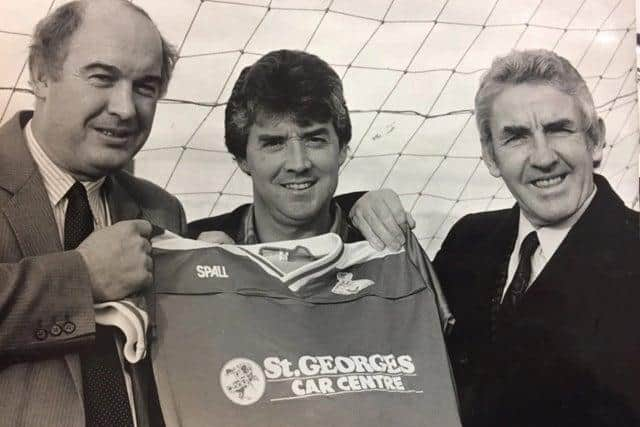

Despite the failures of the first team it was a golden period for youth development which was initiated during Bremner’s first spell in charge and presided over by outstanding youth coach Steve Beaglehole.
Advertisement
Hide AdAdvertisement
Hide AdI watched a lot of the junior games around that time and Beaglehole always seemed to have the edge over all the other youth bosses as his team played the Bremner way which was based on possession and an attractive brand of attacking football.
It all came to a climax in 1988 when the team reached the Youth Cup final at the same time the first team finished bottom of the Third Division!
It started on the plastic pitch at Preston where the youngsters achieved a comfortable 4-1 victory before clinching narrow victories over Port Vale and Sheffield Wednesday in the next two rounds.
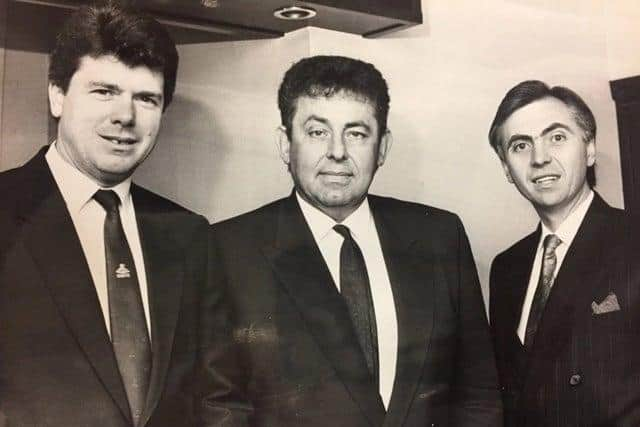

They were then drawn away at Plymouth whose reporter told me had the best youth team they had ever had.
Advertisement
Hide AdAdvertisement
Hide AdRovers had to come from behind and had Rufus Brevett sent off but won an incredible game 6-3 to set up a fifth round tie with Manchester City, a team packed with youth internationals and favourites to win the competition.
But again the young Reds triumphed 2-1 with a late goal from Steve Gaughan and there were more than 5,000 at Belle Vue for the first leg of the semi-final against a talented Tottenham team who had hammered Chelsea 6-0 in a previous round.
Goals from Mark Rankine and Paul Raven gave Rovers a slender 2-1 advantage to take to White Hart Lane and it was a proud moment for Dave Mackay, then the first team boss, to attend the second leg at a ground where he had been a legend.
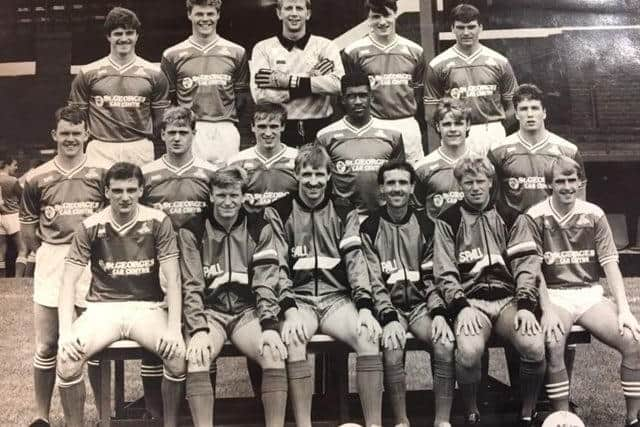

It looked ominous when Rovers went 1-0 down in the second leg but they held on to take the tie to extra time when Beaglehole switched inspirational skipper Mark Rankine from midfield to attack to sensational effect.
Advertisement
Hide AdAdvertisement
Hide AdRankine received a pass with his back to goal and swivelled to fire home a brilliant equaliser which gave them a 3-2 win on aggregate.
Unfortunately there was to be no fairytale ending as the final turned into an anti-climax when Arsenal won the first leg 5-0 at Belle Vue in front of a 6,451 crowd – the highest gate for any home match that season.
It was a rare off night for Beaglehole’s youngsters who drew the second leg 1-1 at Highbury but overall they had covered themselves in glory and done the club proud.
Kevin Campbell, who went on to make over 350 appearances in the top flight with Arsenal and Everton, scored a hat trick in the first game but ten of the Doncaster squad eventually graduated to play league football which was a remarkable achievement for the youth policy at the time.
PLAYERS
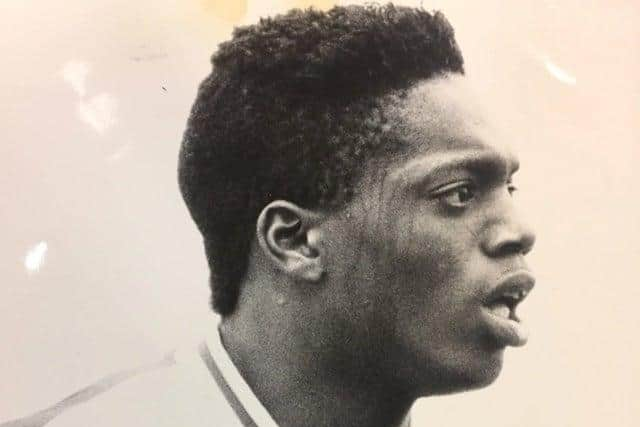

The youth cup team had four exceptional players.
Advertisement
Hide AdAdvertisement
Hide AdMark Rankine was an outstanding captain and leader who had the respect of the entire team and it surprised me he did not go on to become a manager himself. Neil Morris was a big, tough lad up front who was not easy to manage but even he used to listen when Rankine spoke.
He was also quite a talented chess player and I had a few games against him on the team coach until one or two of the players decided it was too much of an intellectual pursuit and ‘accidently’ knocked the pieces over as they went past.
Rufus Brevett was a brilliant left back, who was lightening quick, loved a tackle and had so much composure on the ball.
Beaglehole invited me to come and watch him in a trial game at Rossington and I couldn’t believe how good he was.
Advertisement
Hide AdAdvertisement
Hide AdNot long afterwards he turned up for a game at Belle Vue and I was in the bar with Ian Snodin, who had come to watch, when the 16-year-old walked in after the match. I introduced them and Ian asked Rufus what he wanted. He said ‘half a lager, please’ at which Ian almost choked on his drink and replied ‘no you won’t son - you’re having a lemonade!’
Paul Raven was a year younger than most of the youth team and was still at Hall Cross studying A-levels when he played in the first team.
He was a cultured centre half, big and strong and went on to play over 300 games for West Brom.
Steve Gaughan was a powerful, mazy winger who produced great deliveries at set pieces and was a member of the Chesterfield team that reached the 1997 FA Cup semi-final.
MANAGERS
Advertisement
Hide AdAdvertisement
Hide AdIn the previous decade there had only been three managers but this was a period of chopping and changing and during this spell there were seven.
Dave Cusack was still manager at the start of the period but then Peter Wetzel read a story about Scotland and Spurs legend Dave Mackay coming back from managing abroad and brought him in with Joe Kinnear as his assistant.
They could not have been more different. Mackay was a quiet man with a steely core. He had a habit of wearing leather gloves and you always felt there was an iron fist inside. Joe was a real joker, an extrovert and wind-up merchant.
Mackay’s arrival gave me a unique perspective on that iconic picture of him grabbing Billy Bremner by the neck of his shirt because I was able to ask both of them about it.
Advertisement
Hide AdAdvertisement
Hide AdDave said he had only just come back from a broken leg and Billy had kicked him right at the back of it.
He never liked the picture because he thought it made him look like a bully whereas he had never been sent off despite his hard man image.
Bremner claimed it was just a mistimed tackle but he had been glad to wind up someone who was a senior player for Scotland while he had just got into the squad.
Mackay arrived at a time when Wetzel began to ease up on his financial support of the club and Rovers started to sell players to balance the books.
Advertisement
Hide AdAdvertisement
Hide AdAndy Rhodes went to Oldham for £55,000 and Neil Woods, another talented player who had come through the youth ranks, was sold to Rangers for £120,000.
Mackay eventually stepped down for Kinnear to take over but remained in an advisory capacity to the end of the season.
Joe’s first job was to sell Paul Raven to West Brom for £150,000 and when I rang to ask him about it he started grumbling about Peter Wetzel, saying he had never put any money in the club.
When I asked him if he was sure he wanted that quote to go in the paper I could hear Mackay in the background warning against it but Joe just repeated ‘yes, get it all in’.
Advertisement
Hide AdAdvertisement
Hide AdNaturally I had to give Wetzel his right of reply and when I managed to get hold of him at work he went absolutely barmy.
I asked him how he wanted to respond and he gave me a sentence or two before the phone went dead. I later found out he had charged out of his office, driven from Barnsley to Belle Vue and began to take off his jacket to confront Kinnear until Mackay got between them before it came to blows!
Fortunately neither of them blamed me for the incident.
That summer Billy Bremner returned and brought about a change of fortune on the pitch.
About the same time John Ryan joined the board and Rovers won their first five league games in the 1990/91 season.
Advertisement
Hide AdAdvertisement
Hide AdBremner had again built a really good team playing 3-5-2 with twin powerhouses David Jones and John Muir in attack.
Rankine and Brevett were the wing backs with Eddie Gormley, John Stiles and Kevin Noteman in midfield. At the back were ex-Leeds men Brendan Orsmby and Jack Ashurst along with Colin Douglas, who had been converted to defence from attack.
Douglas could do a job anywhere and was one of the most popular figures and greatest club servants in the club’s history.
It was a team that could have led Bremner to an historic third promotion but it all went wrong when Jones got into a fight with a nightclub bouncer one night and ended up with a broken bone in his neck. He tried to play in the next game without letting anyone know but had to come off and was out for five months recovering.
Advertisement
Hide AdAdvertisement
Hide AdThe big striker was a key player in the side and Rovers struggled for a spell before bouncing back to lead the table at the turn of the year.
But injuries, suspensions and the transfer of influential players led to another slump and, although they were still in with a chance of the play-offs in April, they eventually dropped out of contention.
Bremner also took them within one step of Wembley in the Football League Trophy where they played Third Division leaders Tranmere over two legs in the northern area final. Rovers played really well at Tranmere where Noteman missed an absolute sitter which was cleared off the line and they eventually lost 3-1 on aggregate.
Billy had just missed out on promotion and Wembley and had been unable to work the oracle again.
Advertisement
Hide AdAdvertisement
Hide AdWhen finances became an issue again and the team started badly the following season he offered to resign and Beaglehole took over during a difficult spell.
MATCHES
It all seemed to happen at Rochdale in those days.
David Jones signed in November 1989 and became the first Rovers player to score a hat trick on his debut in a 3-1 win at Spotland.
The following season goalkeeper Paul Crichton achieved what is believed to be a unique feat by saving three penalties in a 3-0 win at Rochdale.
It was the same penalty taken three times.
The referee ordered it to be retaken when he saved the first and the same player took it again with the same outcome. Another player stepped up the third time round but Crichton saved again to the delight of the travelling fans.
Advertisement
Hide AdAdvertisement
Hide AdIn September 1991 Billy Whitehurst was sent off at Rochdale and I was at the bar in the clubhouse having a drink after the game when the doors behind me came crashing open as if I was in a Wild West saloon.
Billy strode in and shouted across the room ‘Catty, what have you put in the Green Un about me being sent off?’
I indicated with my elbow and Billy shouted ‘no I didn’t’, but I quickly replied ‘well he said you did’ and pointed to the big Rochdale centre half who had just been laughing with his mates about the dismissal.
The defender turned white as a sheet and began protesting his innocence as Billy came marching over.
Advertisement
Hide AdAdvertisement
Hide AdBut fortunately Billy was more interested in getting a quick drink before we were due back on the team coach and let the matter drop.
The stories about Billy are legendary and when people ask who was the hardest man to play football there can only be one answer in my book.
KEN RICHARDSON
In March 1993 I was asked to meet the chairman Jim Burke and a solicitor called Paul Dumbleton at a local hotel where I was given the news that a company called Dinard had acquired a controlling stake in the club and ‘appointed’ a man called Ken Richardson as a consultant.
I had been tipped off by Beaglehole that something like this was going to happen but was under the impression that Richardson was going to be up front as the man who had taken charge.
Advertisement
Hide AdAdvertisement
Hide AdAt that stage I knew nothing about Richardson other than he had enjoyed some success backing non-league Bridlington Town.
But I quickly learned more about him as the club entered a period of subterfuge where football eventually took a back seat to conniving behind the scenes, rows over share issues and politics over demands for a new ground.
Richardson was an extraordinary character.
It was a case of the ego has landed when he arrived thrown in with large doses of paranoia.
He used to talk as if he knew all about football but he often did it in horse racing terms.
Advertisement
Hide AdAdvertisement
Hide AdOne example was when he told supporters ‘when the pitches get soft you need some mudlarks who go well in heavy going’.
About ten years before his arrival he had been banned from horse racing, fined and given a suspended prison sentence following the Flockton Grey betting scandal where a three year old ran in a two year old race and won by 20 lengths.
I could never understand how anyone convicted of conspiracy to defraud in one sport could so easily switch to another and questioned FA officials about it many times.
But they seemed powerless to intervene because of the way the takeover had been set up with the mysterious Dinard company in control while Richardson was supposedly only their adviser.
Advertisement
Hide AdAdvertisement
Hide AdI remember attending the first meeting Dumbleton was introduced to supporters to talk about the takeover and when questions were invited I asked if people didn’t want to know more about Dinard and Ken Richardson.
But I was shouted down and one fan said ‘we don’t care if it’s Attila the Hun in charge as long as the club is successful’.
At the time supporters were worried the club might go out of business because of the financial problems and Dinard and Richardson were actually seen as the saviours.
Steve Beaglehole stood up to Richardson at another early public meeting when the so called consultant began making derogatory comments about members of his staff.
Advertisement
Hide AdAdvertisement
Hide AdSome fans agreed with Beaglehole that Richardson was out of order but when he then offered to pull Dinard out of the deal the meeting backed him.
It all became less about football and more about increasing the share capital of the club to give Dinard even more power.
Initially I think Richardson was interested in the football and keen to demonstrate how his ‘knowledge’ of the game would bring untold success.
But eyebrows were raised when the old Rovers board splashed out £100,000 on Graeme Jones from Bridlington before Dinard had fully taken control.
Advertisement
Hide AdAdvertisement
Hide AdRichardson, of course, was supposed to have severed his connections with that club despite the fact that they were now playing their home games at Belle Vue!
Then Dinard came along and coincidentally paid a combined fee of £100,000 for Russ Wilcox and Kevin Hulme.
Richardson had his favourites and Graeme Jones was one of them.
Steve Beaglehole had made an outstanding signing the previous season when he brought Mike Jeffrey in from Bolton for £15,000.
Advertisement
Hide AdAdvertisement
Hide AdBut, because Rovers were so strapped for cash, Jeffrey’s father actually paid Bolton the transfer fee!
Jeffrey was a brilliant striker in the Peter Kitchen mould and if he had the pace to go with his skills he could have been a Premier League player.
But he wasn’t a Richardson signing and when I heard Graeme Jones grumbling to Richardson about him not passing him the ball after a cup defeat at Huddersfield early that season the writing was on the wall.
Just days later Kevin Keegan snapped up Jeffrey for Newcastle United in a player exchange deal with talented midfielder David Roche joining Rovers, who also received £60,000.
Advertisement
Hide AdAdvertisement
Hide AdRichardson thought he knew better than the managers the club was employing and it eventually came out that he was interfering in team selection.
Beaglehole refused to play ball but admitted the pressure was immense and he eventually stepped down to his old youth coach job with Ian Atkins taking the reins in January, 1994.
Atkins had played at the top level and made over 600 league appearances but Richardson still believed he knew best.
Ian wanted to bring in 33-year-old former Chelsea striker Kevin Wilson as player coach but Richardson said he did not want him because ‘his legs had gone’.
Advertisement
Hide AdAdvertisement
Hide AdAt the end of the season Atkins told me he was off to see Richardson at his home in the Isle of Man to sort it out.
A few days later I got a call to say the club had a new manager!
Wilson joined Walsall instead, scored a bagful of goals and made 136 consecutive first team appearances.
Not bad for a player whose ‘legs had gone’.
Atkins was replaced by Sammy Chung who was a nice guy but always trotted out the same line to me when I asked him about Richardson – ‘I’m trying to keep a lid on it’.
Advertisement
Hide AdAdvertisement
Hide AdThe lid finally blew off when he arrived to take charge of a match a couple of seasons later to find Kerry Dixon had been installed in his place!
In June 1995 I returned from holiday to discover there had been a fire at Belle Vue.
I went down the same day to see for myself and bumped into Ken Richardson, who I thought was also going to have a look, so I asked if he would show me the damage to the press box.
It had started right underneath and shot up through where I normally sat.
Advertisement
Hide AdAdvertisement
Hide AdHe replied ‘you can have a look but I’m not going in because I could leave some forensic evidence and they might try and blame it on me’.
Nine months later he was arrested and charged with conspiracy to commit arson.
READ MORE